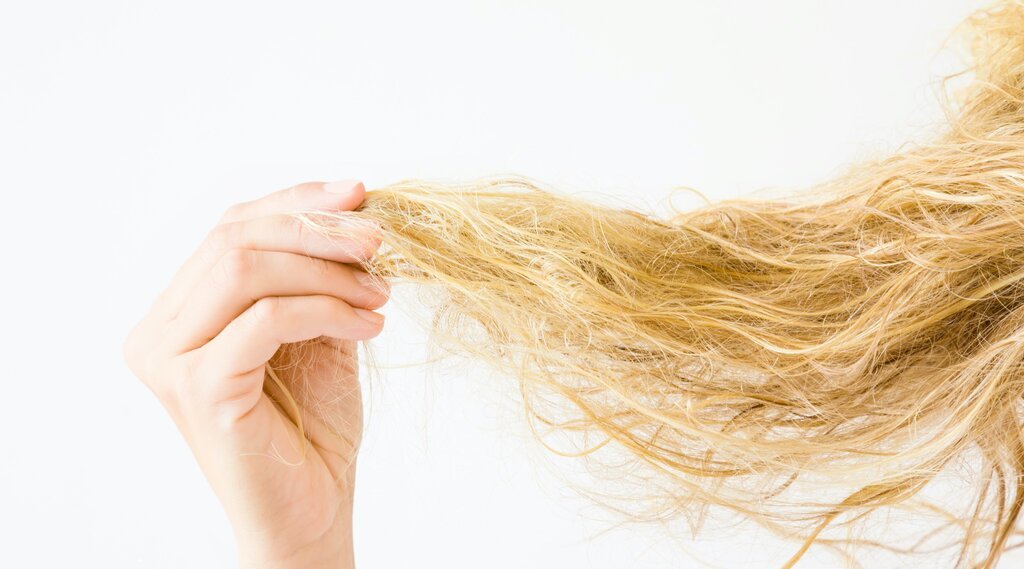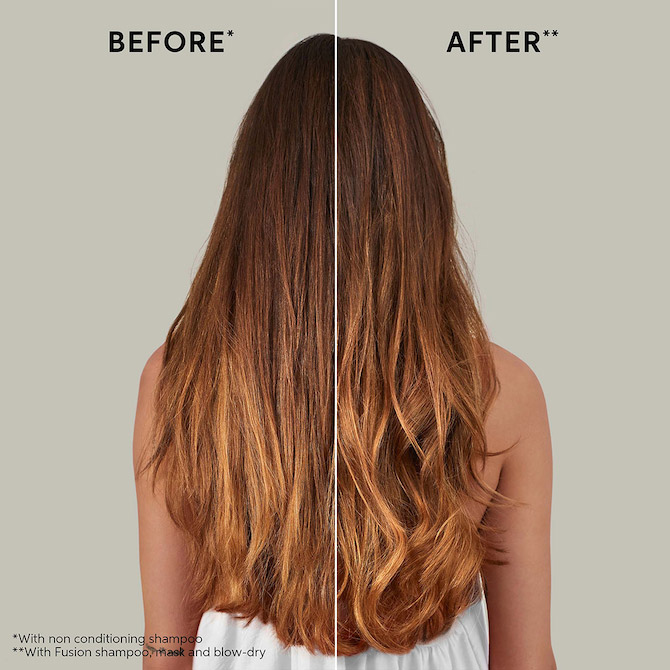Damaged hair looks dry, brittle, and lifeless with split ends and a lack of volume. It may also appear shorter in some areas, indicating breakage along the strand.
Signs of damage can vary depending on the cause, which can include heat, chemicals, and physical stressors like tight hairstyles. It’s important to identify the signs of damaged hair early on to prevent further breakage and promote healthy hair growth.
In this blog post, we’ll explore what damaged hair looks like, common causes of damage, and how to repair and prevent it. We’ll also provide tips for maintaining healthy hair to prevent damage in the first place.

Credit: m.youtube.com
The Basics Of Hair Damage
When it comes to understanding hair damage, it’s essential to recognize the visual clues and physical indicators that reveal the extent of the damage. By knowing what damaged hair looks like, you can take the necessary steps to address and restore the health of your hair.
Visual Clues Of Damage
One way to identify hair damage is by observing its appearance. Damaged hair often appears dry, brittle, and lifeless, with split ends and a lack of volume. Additionally, damaged hair may exhibit a lack of shine and vibrancy, appearing dull and lackluster. These visual cues can help in assessing the overall health of your hair and determining the level of damage it has sustained.
Texture And Touch Test
Conducting a texture and touch test is another effective method to assess hair damage. Run your fingers through your hair and feel for any roughness, uneven texture, and brittleness. Damaged hair may feel coarse and prone to breakage, especially towards the ends. Additionally, excessive tangling and shedding are indicators of hair damage that can be identified through the texture and touch test.
Dryness And Brittleness
Dryness and brittleness are common indicators of damaged hair. Understanding what causes dry and brittle hair is essential to effectively address and restore hair health.
Causes Of Dry Hair
- Excessive heat styling
- Overwashing
- Harsh chemical treatments
Brittle Hair Vs. Healthy Hair
| Brittle Hair | Healthy Hair |
|---|---|
| Feels rough and straw-like | Smooth and soft to the touch |
| Prone to breakage and split ends | Resilient and strong |
| Lacks shine and elasticity | Shiny and flexible |
Split Ends And Breakage
What Does Damaged Hair Look Like? Split Ends and Breakage
Identifying Split Ends
Split ends occur when the protective outer layer of the hair cuticle wears away due to various factors such as heat, chemical processing, or mechanical stress. You can identify split ends by examining the tips of your hair strands. If you notice the hair splitting into two or more strands at the end, it indicates the presence of split ends.
Understanding Hair Breakage
Hair breakage refers to the physical weakening and snapping of the hair shaft. You can recognize hair breakage by observing short, broken strands of hair throughout the length of the hair, rather than just at the ends. Additionally, you may notice an increase in hair shedding and the hair feeling thinner and weaker overall.
Thinning Hair Strands
Thinning hair strands are a common indication of hair damage, often observed as a transition from thick roots to thin ends. This condition can significantly impact the overall volume and appearance of your hair.
From Thick Roots To Thin Ends
Thinning hair strands can be visually identified as a gradual reduction in the diameter of the hair shaft from the scalp to the tips. This transition can result in a visibly uneven and less voluminous look, making the hair appear lackluster and flat.
Impact On Hair Volume
The thinning of hair strands can lead to a noticeable decrease in hair volume, making it challenging to achieve the desired fullness and body in hairstyles. This reduction in volume can affect the overall texture and thickness of the hair, contributing to a less healthy and vibrant appearance.
Increased Shedding
Increased shedding is a common sign of damaged hair. If you notice more hair strands falling out than usual, it could indicate that your hair is experiencing excessive shedding due to damage.
Normal Vs. Excessive Hair Loss
It’s normal to lose around 50-100 hairs per day as part of the natural hair growth cycle. However, if you start to notice clumps of hair coming out or a significant increase in shedding, it may be a sign of excessive hair loss.
When To Be Concerned
If you observe that your hair is thinning noticeably or if your scalp is becoming more visible, it’s important to pay attention to these signs of excessive hair shedding. Additionally, if you experience hair breakage, it’s essential to address the underlying causes of the damage to prevent further loss.

Credit: savemefrom.com
Tangles And Knots
When hair is damaged, it tends to develop tangles and knots more frequently. These tangles can be frustrating to deal with and may lead to further damage if not managed properly.
Why Damaged Hair Tangles More
Damaged hair is prone to tangling due to the roughened cuticle layer and the loss of natural oils that help the hair strands glide past each other smoothly. When the protective outer layer of the hair is compromised, the inner fibers become exposed and are more likely to interlock, leading to tangles and knots.
Dealing With Knots
To effectively deal with knots in damaged hair, it’s essential to use a wide-tooth comb or a specialized detangling brush to gently work through the knots, starting from the ends and gradually moving upwards. Applying a small amount of conditioner or detangling spray can also help to smoothen the hair and ease out the knots without causing further damage.
Dull And Lifeless Appearance
Damaged hair can often exhibit a dull and lifeless appearance, lacking the vibrant shine that characterizes healthy hair. This lack of luster is a clear indicator of hair that is in need of some serious care and attention.
Lack Of Shine
One of the most noticeable signs of damaged hair is the lack of shine. Healthy hair naturally reflects light, giving it a glossy and radiant appearance. Damaged hair, on the other hand, appears dull and lacks that lustrous shine.
Reviving Dull Hair
Reviving dull hair requires a targeted approach to restore its natural shine and vitality. By implementing effective hair care techniques and using nourishing products, you can rejuvenate and revitalize your damaged locks.
Chemical And Heat Damage
Chemical and heat damage can wreak havoc on the health and appearance of your hair. Identifying the signs of these types of damage is crucial in order to take the necessary steps to restore and protect your hair.
Signs Of Chemical Damage
Chemical damage to the hair can manifest in several ways. Dry, brittle strands, split ends, and a lack of volume are common indicators of chemical damage. Additionally, the hair may appear lifeless and lackluster due to the impact of the chemicals on the hair cuticle. Overlapping applications and frequent chemical treatments can exacerbate the damage, leading to further deterioration of the hair’s condition.
Heat Damage Recovery
Restoring heat-damaged hair requires a targeted approach. Deep conditioning treatments can help to nourish and replenish moisture in the hair. Trimming the damaged ends is essential to prevent further splitting and breakage. Incorporating heat protectant products into your styling routine can provide a barrier against the damaging effects of heat styling tools, helping to mitigate future damage. Embracing heat-free styling alternatives can also contribute to the recovery of heat-damaged hair.
Can Damaged Hair Be Repaired?
Damaged hair can look dry, brittle, and lifeless with split ends, lack of volume, and may appear shorter in some areas due to breakage. Chemical treatments, heat styling, and over-processing can cause damage that cannot be fully repaired, but regular trims and using repairing haircare products can help improve the overall health and appearance of damaged hair.
Trimming As A Solution
Trimming your hair regularly can help get rid of split ends, preventing further damage.
Repairing Vs. Hiding Damage
Repairing damaged hair involves addressing the root cause, whereas hiding damage only masks the issue temporarily.
Prevention And Protection
When it comes to damaged hair, prevention and protection are key aspects in maintaining healthy hair. By understanding the signs of damaged hair and taking proactive measures, you can avoid future damage and strengthen your hair care routine.
Avoiding Future Damage
- Avoid excessive use of heat styling tools such as straighteners and curling irons.
- Protect your hair from UV rays by wearing a hat or using products with UV protection.
- Minimize chemical treatments like bleaching and coloring to prevent further damage.
- Trim your hair regularly to get rid of split ends and prevent them from traveling up the hair shaft.
Strengthening Hair Care Routine
- Use a sulfate-free shampoo and a nourishing conditioner to keep your hair moisturized.
- Incorporate a weekly deep conditioning treatment to restore moisture and strengthen the hair.
- Massage your scalp regularly to improve blood circulation and promote healthy hair growth.
- Consider using a leave-in conditioner or hair mask for added protection and nourishment.

Credit: www.youtube.com
Frequently Asked Questions
How Can You Tell If Your Hair Is Damaged?
Dryness, brittleness, split ends, lack of volume, and tangles are some signs that your hair is damaged. If your hair feels thick at the root and thin at the ends, sheds more than usual, or appears dull, it may also be damaged.
Chemically treated hair may look lifeless and have split ends. While some damage can be repaired, severe damage may require a trim or haircut.
Can You Fix Damaged Hair?
Yes, damaged hair can be fixed with proper care, treatments, and trimming to remove split ends.
What Does Extremely Damaged Hair Look Like?
Extremely damaged hair looks dry, brittle, and lifeless with split ends and lack of volume.
How Does Hair Breakage Look Like?
Hair breakage can look like dry, brittle strands with split ends and lack of volume. Additionally, the hair may appear shorter in some areas, indicating breakage along the strand.
Conclusion
Identifying damaged hair involves looking for dryness, split ends, brittleness, and lack of shine. Repairing damaged hair requires proper care and treatments. By recognizing the signs early, you can take steps to restore your hair’s health and vitality. Trust your instincts and address hair damage promptly.


